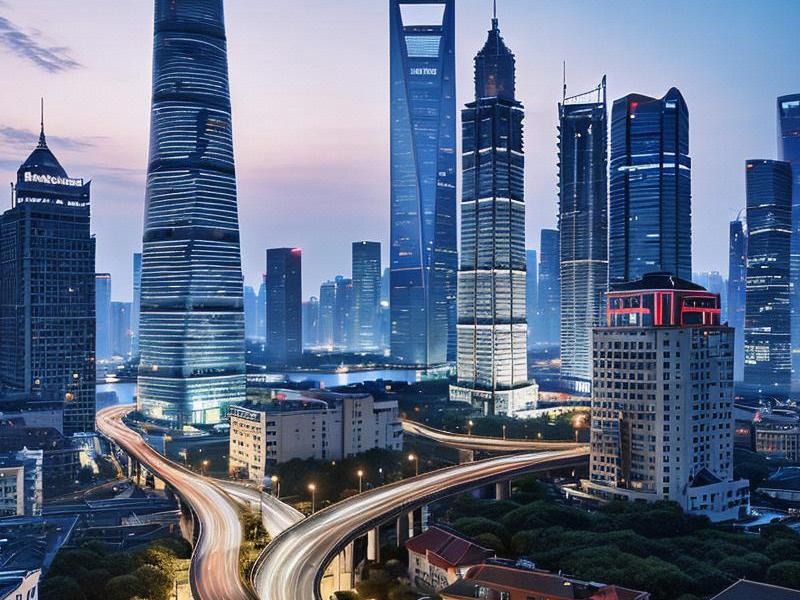This article delves into the latest developments in Shanghai and its surrounding areas, highlighting the region's remarkable progress in innovation, economic growth, cultural vibrancy, and environmental sustainability. It provides an in-depth look at the initiatives and achievements that are shaping the future of this dynamic area.

Shanghai, the vibrant metropolis on the eastern coast of China, has long been a symbol of economic prosperity and cultural diversity. In recent years, the city and its surrounding areas have witnessed a series of transformative changes, driven by relentless innovation and a commitment to sustainable development.
The economic landscape of Shanghai and its neighboring regions has undergone a significant transformation. The city has solidified its position as a global financial hub, with the Shanghai Stock Exchange being one of the largest and most influential in the world. The financial district of Lujiazui, with its iconic skyline of skyscrapers, continues to attract multinational corporations and financial institutions from around the globe.
However, Shanghai's economy is no longer solely reliant on finance. The city has been actively diversifying its industrial base, with a particular focus on high-tech industries such as artificial intelligence, biotechnology, and advanced manufacturing. The Zhangjiang Hi-Tech Park, often referred to as "China's Silicon Valley," has emerged as a breeding ground for innovative startups and cutting-edge research.
The surrounding areas of Shanghai have also benefited from this economic boom. Cities like Suzhou, Wuxi, and Ningbo have developed into major industrial and technological hubs in their own right. Suzhou, known for its beautiful classical gardens and rich cultural heritage, has become a center for precision manufacturing and information technology. Wuxi, with its strong focus on clean energy and environmental technologies, has positioned itself as a leader in the green economy. Ningbo, a port city with a long history of trade and commerce, has expanded its industrial base to include advanced logistics and marine industries.
上海龙凤sh419
Innovation is not just limited to the economic sphere; it is also evident in the cultural and social fabric of Shanghai and its surrounding areas. The city has a rich history that blends Chinese traditions with Western influences, resulting in a unique cultural identity. This cultural diversity is reflected in the numerous art galleries, theaters, and music venues that dot the city.
Shanghai has also been at the forefront of cultural innovation, with initiatives such as the Shanghai International Film Festival and the Shanghai Biennale attracting artists and audiences from around the world. The city's vibrant art scene is further enriched by the presence of numerous creative industries, including fashion, design, and media.
The surrounding areas also boast a wealth of cultural attractions. Suzhou's classical gardens, such as the Humble Administrator's Garden and the Lingering Garden, are UNESCO World Heritage sites that showcase the exquisite craftsmanship of traditional Chinese garden design. Wuxi's Taihu Lake region offers stunning natural scenery and a glimpse into the region's agricultural heritage. Ningbo's ancient city walls and historical temples provide a window into the city's rich history.
上海龙凤419是哪里的
Environmental sustainability is a key focus for Shanghai and its surrounding areas. The city has implemented a series of measures to reduce pollution, improve air quality, and promote green development. The expansion of public transportation networks, including the metro system and bike-sharing programs, has helped to reduce traffic congestion and carbon emissions.
The surrounding areas have also taken significant steps towards environmental sustainability. Suzhou has been a pioneer in water conservation, with its comprehensive water management system ensuring the sustainable use of the city's abundant water resources. Wuxi has invested heavily in renewable energy technologies, such as solar and wind power, to reduce its reliance on fossil fuels. Ningbo has implemented strict waste management policies to promote recycling and reduce landfill waste.
Education and talent development are crucial components of Shanghai and its surrounding areas' long-term strategy for sustainable growth. The city has established itself as a global education hub, with world-renowned universities such as Fudan University and Tongji University attracting students and researchers from around the world. These institutions are at the forefront of research and innovation, contributing to the city's economic and technological advancements.
上海龙凤阿拉后花园
The surrounding areas have also made significant investments in education and talent development. Suzhou has developed a robust education system that includes international schools and vocational training programs. Wuxi has established research institutions and incubators to support startups and foster innovation. Ningbo has implemented policies to attract and retain top talent, including housing subsidies and career development opportunities.
Tourism is another important sector for Shanghai and its surrounding areas. The city's unique blend of modernity and tradition makes it a popular destination for tourists from around the world. Iconic landmarks such as the Bund, the Oriental Pearl Tower, and the Yu Garden attract millions of visitors each year. The city's vibrant nightlife, shopping districts, and culinary scene further enhance its appeal.
The surrounding areas offer a diverse range of tourist attractions. Suzhou's classical gardens provide a tranquil escape from the hustle and bustle of city life. Wuxi's Taihu Lake region offers opportunities for water sports, fishing, and sightseeing. Ningbo's ancient city walls and historical temples provide a glimpse into the region's rich history.
In conclusion, Shanghai and its surrounding areas are at the forefront of China's economic, cultural, and environmental development. The region's commitment to innovation, sustainability, and talent development ensures that it will continue to thrive in the years to come. As Shanghai looks to the future, it is clear that the city and its surrounding areas will play a pivotal role in shaping the destiny of China and the world.